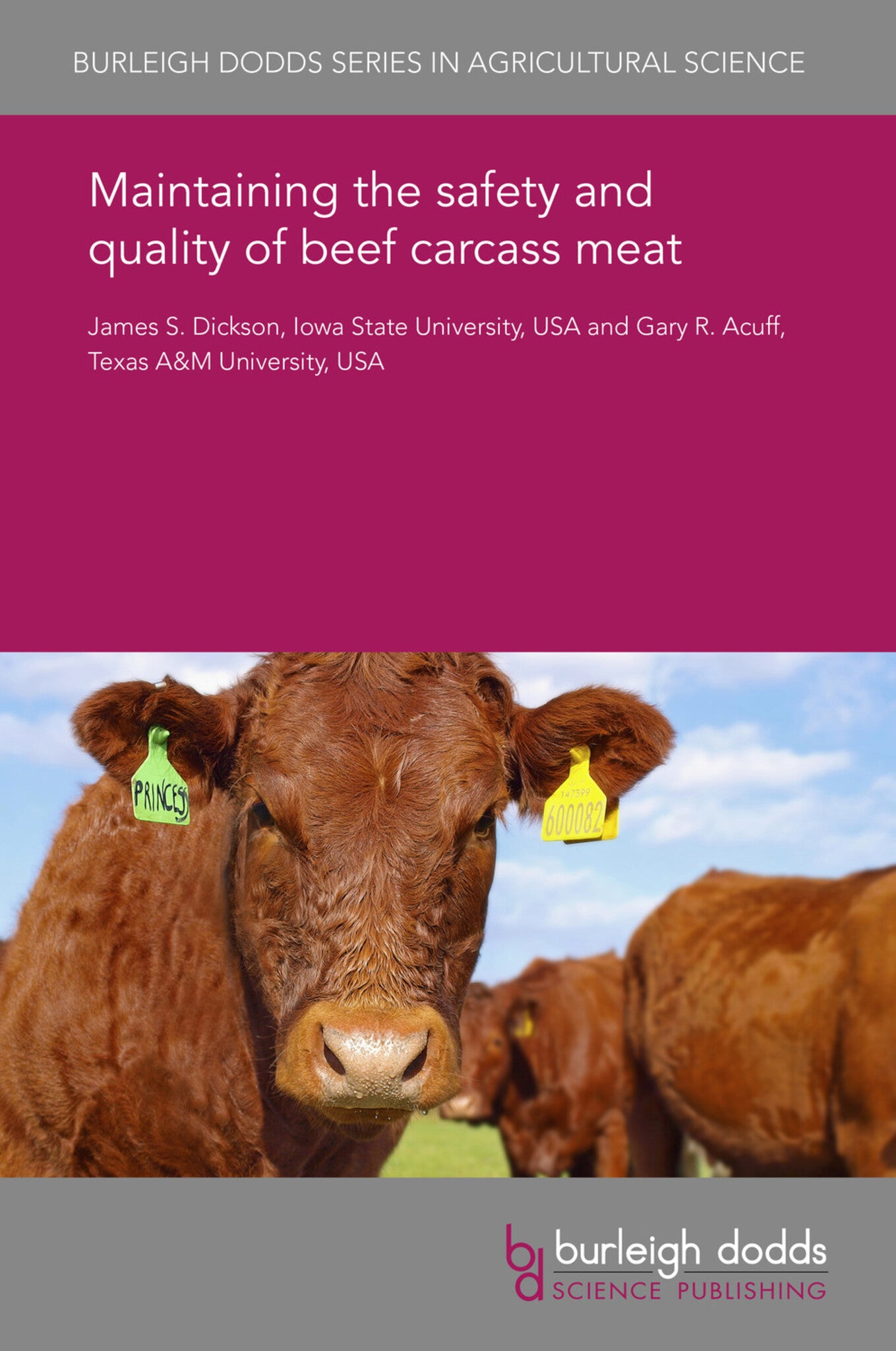We're sorry. An error has occurred
Please cancel or retry.
Maintaining the safety and quality of beef carcass meat
Regular price
£25.00
Sale price
£25.00
Regular price
£0.00
Unit price
/
per
Sale
Sold out
Re-stocking soon
Contamination of animal carcasses during slaughtering procedures is undesirable, but unavoidable in the conversion of live animals to meat for consumption. Internal muscle tissues are essentially s...
Read More

Some error occured while loading the Quick View. Please close the Quick View and try reloading the page.
Couldn't load pickup availability
- Format:
-
09 June 2017

Contamination of animal carcasses during slaughtering procedures is undesirable, but unavoidable in the conversion of live animals to meat for consumption. Internal muscle tissues are essentially sterile, and most initial contamination of red meat carcasses is contributed by the hide during removal. The exposed surface of the hide and the hair accumulate dust, dirt and faecal material, and this is the primary source of bacterial contamination during slaughter. In this chapter, we review the slaughter process and the mechanism of bacterial attachment to meat tissue. We then review the decontamination methods of knife trimming, water washing and steam vacuuming, and evaluate their effectiveness. We consider hot water, organic acid and other decontamination treatments; review the potential for contamination during fabrication; and finally, discuss the role of packaging, storage and shelf life estimates in ensuring the safety of meat delivered to consumers.

Price: £25.00
Publisher: Burleigh Dodds Science Publishing
Imprint: Burleigh Dodds Science Publishing
Series: Burleigh Dodds Series in Agricultural Science
Publication Date:
09 June 2017
ISBN: 9781838790271
Format: eBook
BISACs:
TECHNOLOGY & ENGINEERING / Agriculture / Sustainable Agriculture, Animal husbandry, TECHNOLOGY & ENGINEERING / Agriculture / Animal Husbandry, Sustainable agriculture

1 Introduction 2 Process flow description 3 Bacterial attachment to meat surfaces 4 Decontamination methods 5 Decontamination treatments: hot water and organic acids 6 Decontamination treatments: other interventions 7 Processing operations: fabrication 8 Packaging, storage and shelf life 9 Conclusions 10 References



